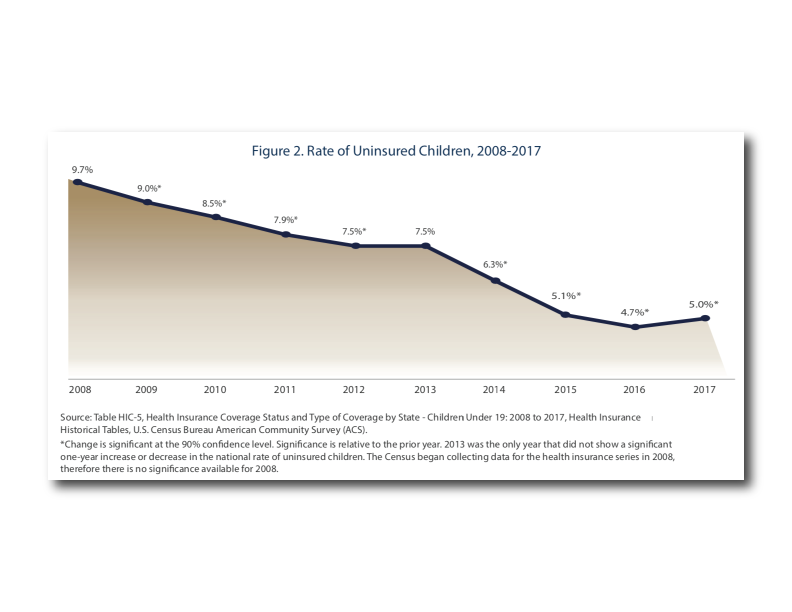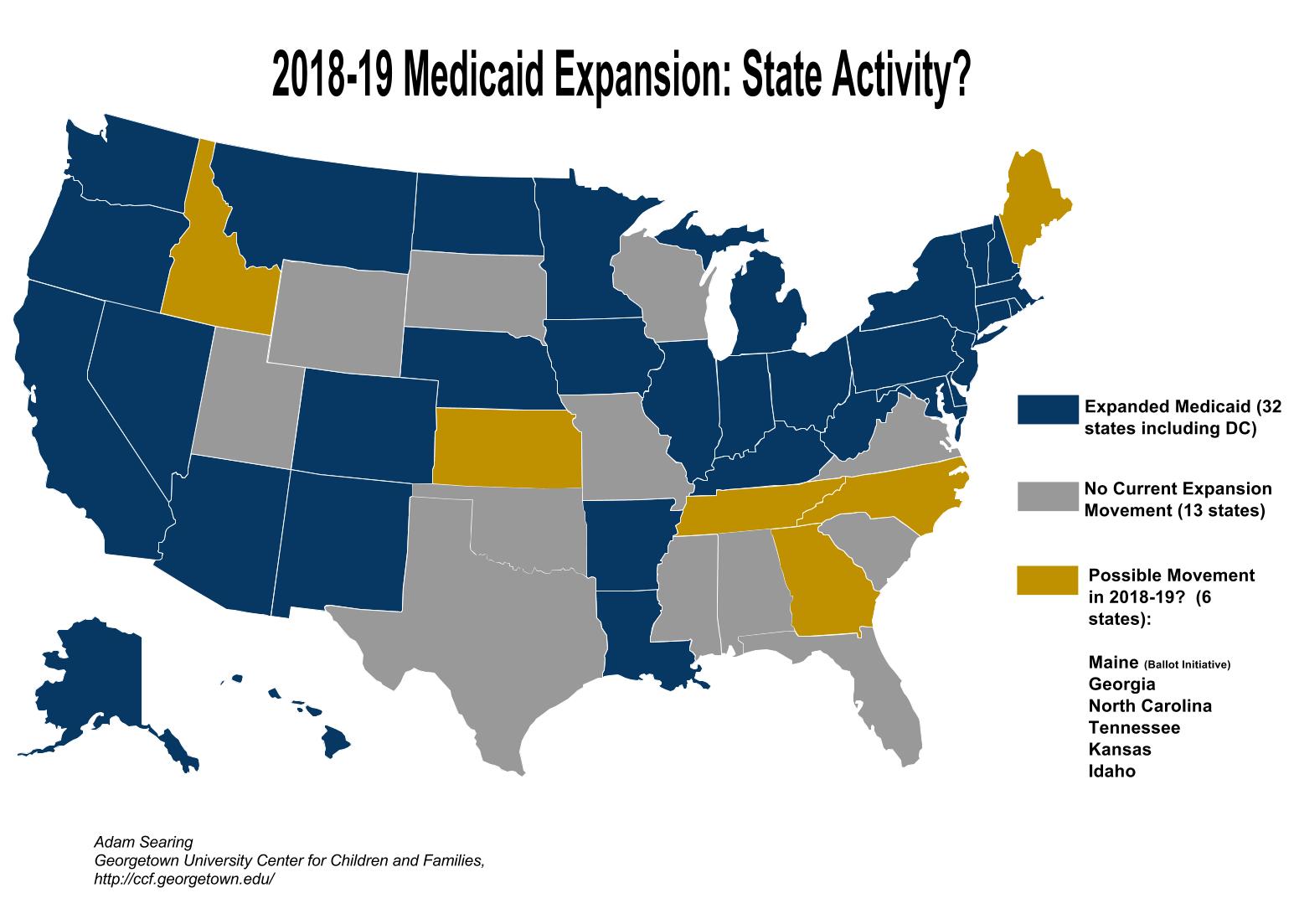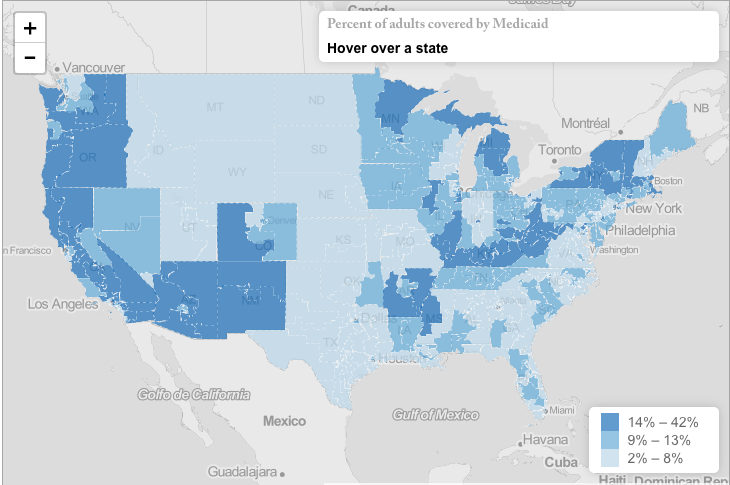Maine
-
Medicaid’s Role in Small Towns and Rural Areas
Key Findings Background One-fifth of people in the United States live in areas that are classified as non-urban. Residents of rural areas and small towns face additional challenges accessing needed health services compared to residents of metro areas for a variety of reasons including acute provider shortages, limited connectivity, and long distances to travel to…
-
CMS Announces State Recipients of the Transforming Maternal Health (TMaH) Model
Last year, CMS announced a grant opportunity to boost state Medicaid agency efforts to improve maternal health in the United States. The Transforming Maternal Health (TMaH) Model seeks to help states develop a comprehensive approach to the perinatal period that addresses the whole person’s physical, mental health, and social needs that may be experienced during…
-
State Medicaid and CHIP Snapshots, 2023
The Georgetown University Center for Children and Families (CCF) and the American Academy of Pediatrics (AAP) created factsheets underscoring the importance of Medicaid in providing coverage for children in all 50 states and the District of Columbia. Sources available here. Previous snapshots can be found here (2019), here (2018) and here (2017). Check out more interactive…
-
2016 Maps
The interactive maps and data for 2016 provide information on the percent of adults and children covered by Medicaid and/or CHIP.You can embed these maps on your website by selecting a state on the left then copying the embed code on the right side of the map and pasting it into a post on your…
-
Nation’s Progress on Children’s Health Coverage Reverses Course
Introduction For the first time since comparable data was first collected in 2008, the nation’s steady progress in reducing the number of children without health insurance reversed course. The number of uninsured children under age 19 nationwide increased by an estimated 276,000 to about 3.9 million (3,925,000) in 2017, according to newly-available data from the…
-
Medicaid Waiver Wars: CMS Strikes Back
Late last month, a federal District Court ruled that the approval of the Kentucky Medicaid work requirements waiver by the Secretary of Health and Human Services was “arbitrary and capricious” because, among other things, even though the record showed that 95,000 people would lose Medicaid coverage, “the Secretary paid no attention to that deprivation.” The…
-
State Medicaid and CHIP Snapshots, 2018
The Georgetown University Center for Children and Families (CCF) and the American Academy of Pediatrics (AAP) created factsheets underscoring the importance of Medicaid in providing coverage for children in all 51 states (including the District of Columbia). Sources are available here. Previous snapshots can be found here.
-
Tracking Medicaid Work Requirement Proposals
We here at Georgetown University CCF are closely tracking Medicaid Section 1115 demonstration waiver proposals as states attempt to create new barriers to coverage. There are many troubling proposals pending, but one of the most common is the imposition of a work or community service requirement as a condition of Medicaid coverage. As a reference,…
-
Nationwide Rate of Uninsured Children Reaches Historic Low
Nationwide 95.5 percent of children had health insurance in 2016, up from 95.2 percent the previous year—and up from 92.9 percent in 2013, the year before the ACA was fully implemented. While relatively few children rely on the ACA’s Marketplace for insurance, many gained coverage in Medicaid or CHIP when their parents signed up for…
-
Section 1115 Medicaid Waiver Comments
Georgetown University’s Center for Children and Families contributes an independent perspective to the public dialogue on the future of Medicaid through the lens of children and their families.
-
Governor LePage’s Medicaid Proposal Would Harm Low-Income Mainers
Governor Paul LePage’s proposal for harsh changes in the state’s Medicaid program, known as MaineCare, would restrict access to health care for many low-income Mainers. Maine is one of 19 states that haven’t adopted the Affordable Care Act’s (ACA’s) Medicaid expansion, leaving most poor adults without a coverage option. The governor’s proposal would make it…
-
Medicaid’s “Welcome Mat” Effect Means Medicaid Expansion Helps Children Get Health Coverage
New research in the journal Health Affairs this month gives even more evidence for a parental “welcome mat” effect that increases health coverage among children already eligible for Medicaid or the Children’s Health Insurance Program when their parents become eligible as well. Simply put, moving to “whole family coverage” through a state Medicaid expansion or…
-
State CHIP Snapshots
The Role of CHIP in Children’s Coverage In 2016 the children’s health insurance coverage rate in the United States dropped to just above 95 percent, an impressive achievement. Key to this success is the Children’s Health Insurance Program, which provides coverage to children who do not qualify for Medicaid but whose families cannot otherwise afford…
-
Medicaid Fills a Crucial Role in Rural America
A number of new resources have been published recently by other research organizations on the key role that Medicaid plays in providing coverage for residents of rural areas. The Kaiser Family Foundation’s report, “The Role of Medicaid in Rural America,” found that Medicaid helps overcome some of the unique challenges in rural areas including provider…
-
INTERACTIVE MAPS: Children Covered by Medicaid and CHIP by county, state or congressional district.
These maps show how many children are covered by Medicaid in each county and congressional district. Visit these links to view the maps, and to download handouts on your state’s coverage data: Percent of Children Covered by Medicaid/CHIP (congressional district) Percent of Children Covered by Medicaid/CHIP (county) Visit CCF’s State Resource Center for state-level data on health…
-
How the AHCA Yanks Welcome Mat Out From Under Children Eligible for Medicaid and CHIP
The Affordable Care Act’s (ACA) coverage provisions did not target children’s eligibility for Medicaid or CHIP. It was aimed at closing the coverage gap for adults – both adults without dependent children, who were generally ineligible for Medicaid, and parents, whose pre-ACA Medicaid eligibility was well below the poverty level in many states. Yet, we…
-
New England Leads Trends For Growth In Children’s Health Coverage
By Celeste Davis, Community Catalyst Coverage success for children did not happen overnight and is not static. As we enter the next open enrollment period, we are reminded that coverage and maintaining coverage is ongoing and requires year-round support. This is especially true for children whose needs change as they grow and their opportunity for…
-
Report Suggests Improved Outreach and Enrollment Efforts Directed at Very Poor Parents Needed
As I was flying back from Atlanta the other night, I read a fascinating new paper by researchers at the Urban Institute (a team led by the esteemed Genevieve Kenney), which looks at adult uninsured rates and participation rates in Medicaid. In particular, the researchers examine how the number of uninsured parents and childless adults…
-
New Report Finds When Parents Were Cut from MaineCare, Kids Lost Coverage Too
It is a well-documented fact that connecting parents with coverage has a positive impact on children and now Maine Children’s Alliance has released a report that shows how disconnecting parents from coverage negatively impacts children. About 28,500 working Maine parents lost coverage after the state scaled back coverage in 2012. Prior to 2012, Maine offered…
-
Children’s Health Coverage on the Eve of the Affordable Care Act
Georgetown University Center for Children and Families researchers analyzed health insurance data from the Census Bureau’s annual American Community Survey to get a closer look at children’s coverage trends. On the eve of the implementation of the Affordable Care Act coverage expansions, the authors found important lessons from the success the U.S. has had in covering children. The number of uninsured…
















